Skin, Flesh and Bones: An Anatomy of Health Education 2.0
|
If you are the presenter of this abstract (or if you cite this abstract in a talk or on a poster), please show the QR code in your slide or poster (QR code contains this URL). |
Abstract
As social media and technologies are widely adopted by the general public and patient care communities, academic healthcare environments face challenges of assessment, adoption, implementation, integration and dissemination of these tools. Driving this process is a balance between evolved efficiencies in current workflows, resistance to change, perceived inutility of new tools, and risks of institutional self-marginalization and loss of new workflow efficiencies through delayed adoption. At the University of Michigan, this dynamic has been addressed through collaborations across schools, creation and promotion of new content through social media channels, integration of healthcare students into the content production workflows, and planning of curricula to provide context and support for faculty, staff, and students.
To support the University of Michigan Medical School’s exploration into outcomes-based education, we’re creating a fluid ecosystem of dynamic, innovative tools integrated into and coordinated by the Sakai learning management system using IMS Learning Tools Interoperability. Tools are conceived, designed, developed, deployed, and used in learning activities in a 10-15 week cycle. A key development platform is Google App Engine, facilitating development and delivery of services through cloud computing. The system allows users to view, comment, and interact with learning objects outside of traditional LMS constructs. This reinforces open education concepts as, instead of importing learning objects into the LMS, we link to the shared, open learning object. Our future plans include adding these learning tools to our OER publishing platform at to facilitate open learning communities beyond our enrolled students.
The Medical School, with the support of the Hewlett Foundation, recently launched the Health Open Educational Resources (OER) initiative. OERs are learning materials offered freely and openly for faculty, students, and self learners around the world to use, improve, and redistribute. Also participating in Health OER are Dentistry, Public Health, Nursing, Information, Public Policy, Engineering, LSA, and the University Library. In 2009, the project’s objectives are to maximize the impact and visibility of our faculty-created educational content by converting our pre-clinical curricular materials into OER and collaborating with universities in Ghana and South Africa to co-create new learning materials. Central to Health OER is using students as dScribes, “digital and distributed scribes,” working with participating faculty to publish materials online, a student-driven model prototyped in the earlier iTunesU project in the School of Dentistry. To facilitate the student and faculty interaction around OER, we developed OERca, a web application for collaboratively clearing and annotating OER.
Synchronously with content creation activities, the Health Sciences Libraries collaboratively developed and implemented curricular interventions ranging from baseline social technology competencies for medical students through Science 2.0 gateway, bridge, and mastery tools for faculty and research scientists, focusing on utility of social technologies for productivity and bench-to-bedside applications. Use of virtual worlds and other collaboration technologies are included to enrich connections for distance learning and our remote partners. The overall goal is to promote awareness and acceptance of tools to facilitate new media competencies, supporting the aforementioned projects and the campus focus on open access and open educational resources.
To support the University of Michigan Medical School’s exploration into outcomes-based education, we’re creating a fluid ecosystem of dynamic, innovative tools integrated into and coordinated by the Sakai learning management system using IMS Learning Tools Interoperability. Tools are conceived, designed, developed, deployed, and used in learning activities in a 10-15 week cycle. A key development platform is Google App Engine, facilitating development and delivery of services through cloud computing. The system allows users to view, comment, and interact with learning objects outside of traditional LMS constructs. This reinforces open education concepts as, instead of importing learning objects into the LMS, we link to the shared, open learning object. Our future plans include adding these learning tools to our OER publishing platform at
The Medical School, with the support of the Hewlett Foundation, recently launched the Health Open Educational Resources (OER) initiative. OERs are learning materials offered freely and openly for faculty, students, and self learners around the world to use, improve, and redistribute. Also participating in Health OER are Dentistry, Public Health, Nursing, Information, Public Policy, Engineering, LSA, and the University Library. In 2009, the project’s objectives are to maximize the impact and visibility of our faculty-created educational content by converting our pre-clinical curricular materials into OER and collaborating with universities in Ghana and South Africa to co-create new learning materials. Central to Health OER is using students as dScribes, “digital and distributed scribes,” working with participating faculty to publish materials online, a student-driven model prototyped in the earlier iTunesU project in the School of Dentistry. To facilitate the student and faculty interaction around OER, we developed OERca, a web application for collaboratively clearing and annotating OER.
Synchronously with content creation activities, the Health Sciences Libraries collaboratively developed and implemented curricular interventions ranging from baseline social technology competencies for medical students through Science 2.0 gateway, bridge, and mastery tools for faculty and research scientists, focusing on utility of social technologies for productivity and bench-to-bedside applications. Use of virtual worlds and other collaboration technologies are included to enrich connections for distance learning and our remote partners. The overall goal is to promote awareness and acceptance of tools to facilitate new media competencies, supporting the aforementioned projects and the campus focus on open access and open educational resources.
Medicine 2.0® is happy to support and promote other conferences and workshops in this area. Contact us to produce, disseminate and promote your conference or workshop under this label and in this event series. In addition, we are always looking for hosts of future World Congresses. Medicine 2.0® is a registered trademark of JMIR Publications Inc., the leading academic ehealth publisher.

This work is licensed under a Creative Commons Attribution 3.0 License.



